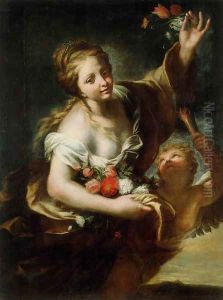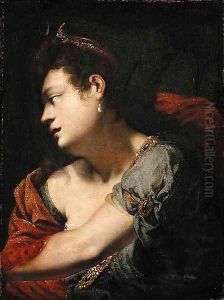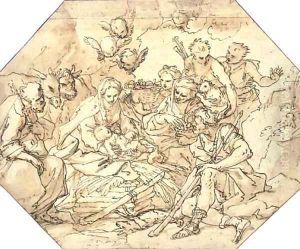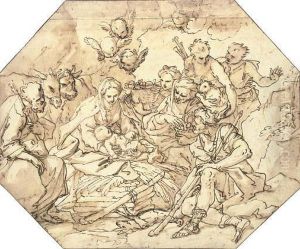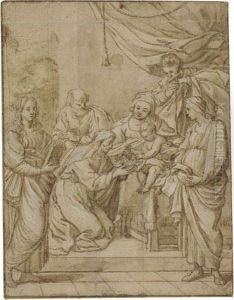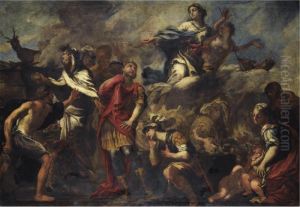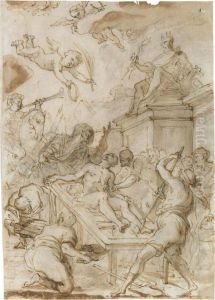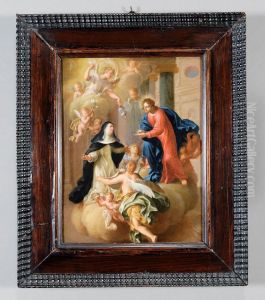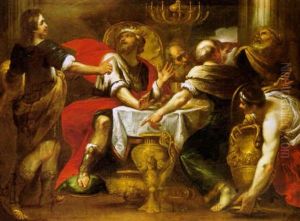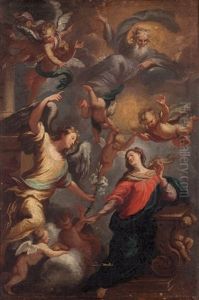Giovanni Andrea Carlone Paintings
Giovanni Andrea Carlone was an Italian painter of the Baroque period, born in 1639 in Genoa, Italy. He was part of the extended Carlone family of painters and artists from Northern Italy and Austria, which included his father, Giovanni Battista Carlone, and his older brother, Giovanni Bernardo Carlone. The Carlone family played a significant role in the artistic scene of Northern Italy and parts of Central Europe during the 17th century, contributing to the spread of the Baroque style in these regions.
Giovanni Andrea was known for his fresco work and his adeptness in creating grand, elaborate paintings on ceilings and walls, which were typical of the Baroque era's taste for drama and ornamentation. His style was characterized by dynamic compositions, a strong sense of movement, vivid color palettes, and the use of light to achieve a sense of depth and volume. He was influenced by the works of other Baroque artists such as Peter Paul Rubens and members of the Carracci family.
Among his notable works is the decoration of the Palazzo Carrega in Genoa. He also worked extensively in churches in Northern Italy, where he painted altarpieces and ceiling frescoes. His religious commissions often featured saints and biblical scenes depicted in a manner that aimed to inspire awe and devotion in the viewer. In addition to his work in Genoa, Carlone was active in other Italian regions, including Lombardy and the Veneto.
Giovanni Andrea Carlone's contribution to the Baroque movement was significant in the dissemination of the style beyond Rome and across Northern Italy. His works are emblematic of the theatricality and emotional intensity that the Baroque era embraced. Carlone's artistic legacy continued through his family, with subsequent generations maintaining the tradition of painting.
He died in 1697, leaving behind a body of work that remains appreciated for its artistic merit and historical importance in the context of the Baroque period in Italy. Today, his works can be viewed in various churches and palaces, where they continue to be studied and admired for their technical skill and beauty.
